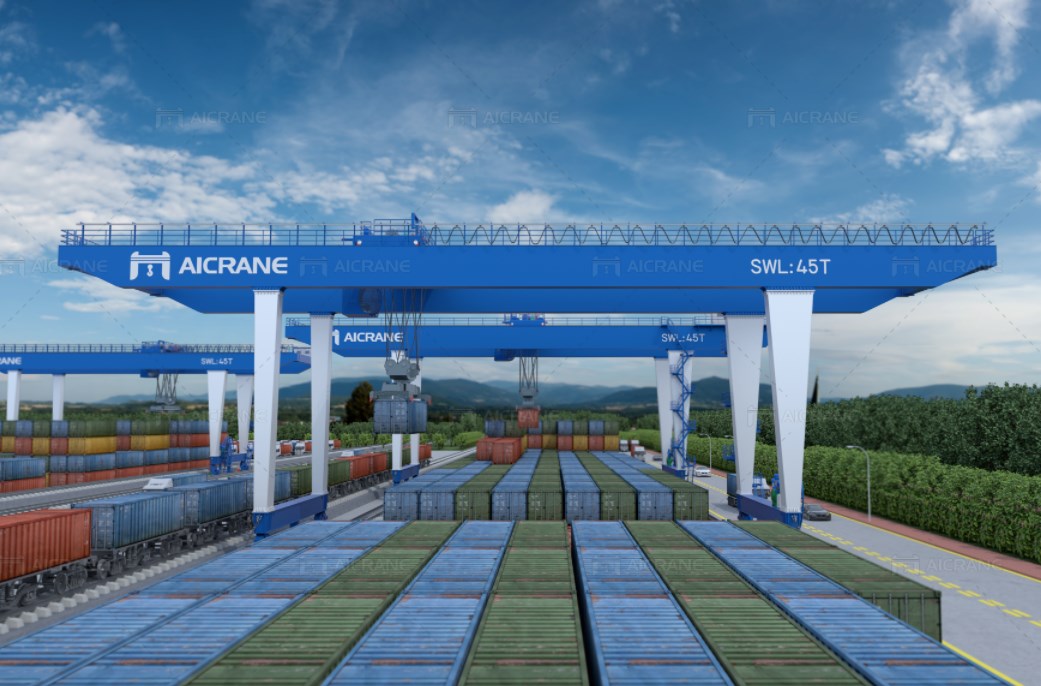Factors Influencing Gantry Container Crane Costs
In the dynamic world of maritime logistics, efficiency and cost-effectiveness are paramount. Gantry container cranes stand as towering symbols of modern port operations, providing the backbone for efficient cargo handling. The cost of acquiring and operating these cranes is a critical consideration for port authorities and operators. This article delves into the intricate web of factors that influence the cost of gantry container cranes, shedding light on the decisions and considerations that shape the investment landscape.
1. Crane Capacity and Size:
One of the primary determinants of gantry container crane costs is its lifting capacity and size. Cranes with higher lifting capacities and larger spans are generally more expensive due to the engineering complexities involved in ensuring structural integrity and load-bearing capabilities.
2. Technology and Automation:
The level of technological sophistication significantly impacts the cost of gantry container cranes. Automation features such as remote control, anti-collision systems, and advanced diagnostics not only enhance operational efficiency but also contribute to higher upfront costs.
3. Structural Design and Materials:
The design of the crane's structure, including materials used in its construction, plays a crucial role in cost determination. Materials with higher strength and corrosion resistance may incur higher costs. Additionally, intricate structural designs for improved stability and load distribution can contribute to increased expenses.
4. Environmental Considerations:
Ports operating in challenging environments, such as corrosive coastal areas or regions with extreme weather conditions, require gantry cranes with enhanced corrosion protection and weather-resistant features. These adaptations can lead to higher costs.
5. Power Supply and Energy Efficiency:
Energy-efficient features, such as regenerative braking systems and optimized power consumption, can contribute to long-term cost savings in terms of energy bills. However, these technologies may involve higher upfront investments.
6. Customization and Accessories:
Customization tailored to specific operational needs can drive up gantry crane costs. Additional accessories like specialized spreader bars, lighting systems, or environmental control systems can add to the overall price.
7. Manufacturer and Brand Reputation:
The reputation and track record of the crane manufacturer also influence pricing. Established and reputable manufacturers often command premium prices due to their proven quality, reliability, and after-sales support.
8. After-Sales Support and Warranty:
The presence of comprehensive after-sales support and longer warranty periods can affect the initial cost of gantry container cranes. Higher-quality support and extended warranties can offer peace of mind but may lead to higher upfront expenses.
9. Installation and Commissioning:
Installation and commissioning costs, including site preparation, crane assembly, and testing, can contribute to the overall expenditure. The complexity of the installation process and the need for specialized equipment may impact these costs.
10. Geographic Location:
The location of the port can influence the costs associated with transporting and installing the gantry crane. Remote or difficult-to-access locations may require additional logistical arrangements, impacting the overall investment.
Conclusion:
As ports strive for optimal efficiency and productivity, the investment in gantry container cranes becomes a strategic decision. Understanding the multifaceted factors that influence crane costs empowers stakeholders to make informed choices that align with their operational requirements and long-term goals. Balancing upfront investment with long-term benefits, including operational efficiency and reduced maintenance costs, is key to making a wise and forward-looking investment in gantry container cranes.



Comments
Post a Comment